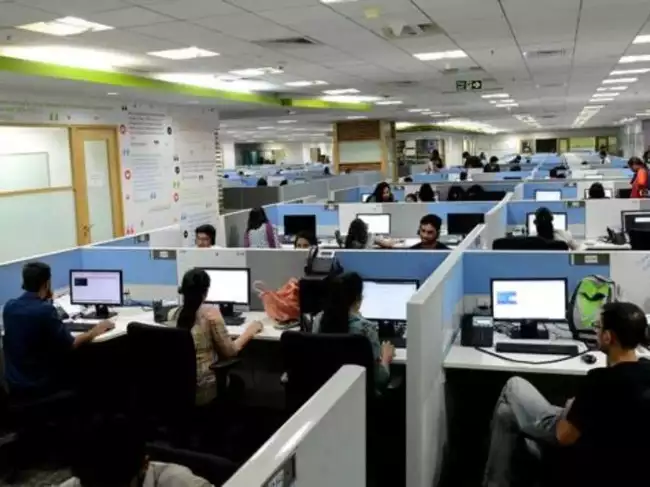In February, Technicolor announced that the company was in deep financial trouble.
This week, two major events take place.
First of all, we learned that the Canadian and French branches of Mikros Animation were acquired by Rodeo FX and OuiDO Production (the business has been split between animated feature and episodic). The Paris Commercial Court should also announce today that MPC & The Mill Paris have been acquired by another company, most likely TransPerfect. As a reminder, Transperfect already acquired Technicolor Games: most of the team is based in India.
The second major news, and the core of this article, is related to the other employees in India working for MPC, The Mill, and Mikros Animation.
Relieving letters were sent at the beginning of the week, effective February 27th (before the letter was sent). As far as we know, most employees, if not all, officially lost their job.
It seems, that around 2,700 jobs have effectively been destroyed.
Despite this announcement, employees are kept in the dark regarding unpaid salaries and dues. Many are desperate, and finding a position in another VFX or animation studio is quite difficult, since other companies take advantage of the situation.
Here is what they told us, and what you should know about this dire situation.
Technicolor India testimonies
First of all, we want to acknowledge that this article could not have existed without the help of Indian artists and technicians who sent us their testimonies following posts we shared on our LinkedIn page.
Many fear they might get blacklisted, we will therefore not include in this article any names or details that could help identify them. We should however highlight that almost all of them gave us their identity, which helped us ensure that they are/were indeed Technicolor employees.
We could only include some of these testimonies in this article, but each one we received was very helpful to understand the situation, and we thank everyone who got in touch with us.
A short reminder of the situation at Technicolor
Back in February, Technicolor sent internal e-mails explaining to all employees that the company was in financial trouble, and that despite discussions with investors and companies that could acquire the group, the management had been unable to secure a path forward. In a nutshell, Technicolor was facing a wall, and layoffs were to be expected.
This cash flow problem is explained by several issues, including:
- The Hollywood strikes in 2023: actors and screenwriters went on strike for weeks in the USA. Many projects were either postponed or cancelled, which greatly impacted the industry: VFX artists, for example, can’t finish work on scenes that have not been shot.
- Post-covid recovery was also a challenge, as explained by Technicolor Group CEO Caroline Parot in an internal e-mail.
- The Technicolor group we’re talking about here originated from an earlier group (also named Technicolor). To simplify, remember that the original group split into two: Technicolor Creative Studios on one side (focused on VFX and animation), and Technicolor SA on the other (specialized in internet access systems and broadband activities, and later renamed Vantiva).
The separation of the entities was very costly, and half of the initial group’s debt was taken on by the Technicolor we know -that is, the company focused on animation and VFX-, immediately creating a financial burden. - It is also quite obvious that strategic decisions within the Technicolor Group were far from perfect, since other very big companies survived the turmoil of Covid and the strikes.
For example, some of the artists who got in touch with us highlighted an “aggressive expansion” strategy, with Technicolor acquiring other studios. Furthermore, the company invested in a new office in Mumbai. An expense that, they think, was not necessary.
Following the announcement, each branch was supposed to handle the situation according to local law.
First steps taken at Technicolor India
In India, following the announcement, employees were asked to work from home, as Technicolor India did not have the funds to keep the offices working.
Several employees tell us that they were not even allowed to collect their belongings left at the office.
During an online meeting (part of it leaked online), Biren Ghose, the Managing Director, Asia Pacific for Technicolor, explained that Technicolor India would be unable to pay salaries for February, and that they essentially had no funds left. Biren Ghose said: “we are with you in the trauma that you are experiencing currently”.
Biren Ghose added that the funds needed to pay the employees were suppose to come from the headquarters in Paris, and that they always came a couple of days before salaries were paid. In a nutshell, he pointed to the headquarters as responsible for the lack of funds.
We should mention that we were not able to verify this information: since the headquarters in France has been in a judicial recovery process for the last few weeks, the company has not shared much information with the press.
At the beginning of this week, relieving letters were sent to employees. We asked confirmation from employees at MPC, The Mill, and Mikros Animation, and all of those who answered confirmed this. Which seems to indicate that virtually all employees have been laid of.
The exact number of Technicolor India employees who list their job is unknown: some sources estimate it was over 3,000, while another source reports the number is closer to 2,700.
Unpaid Salaries and Dues
The (now former) Technicolor India employees who got in touch with us explained that they are owed a lot of money, including unpaid salaries for February 2025.
Other financial obligations have not been fulfilled, employees tell us, such as “Unremitted Provident Fund (Retirement fund) […] Since October 2024”, even though the money “was already deducted from respective month’s salary”. They are also owed “Income tax deductions”, “pending salary for earned live”, and “retrenchment compensation” (an amount given to compensate for the loss of employment).
One of the workers who contacted is hoping the French headquarters may act: “Who will take responsibility for our February and March salaries, gratuity, and severance? If Paris addresses these owed payments, we could survive and provide for our families.”
So far, the situation has not been solved. In other words, former employees now face a very difficult situation, lacking funds they were counting on to live. We are told that some are selling belongings to get some money.
Miscommunication and lack of answers
A major complaint from artists who contacted us is the lack of communication from the Technicolor India management. Following the initial announcement, and until the relieving letter they received a few days ago, many of these employees tell us they they spent weeks without any news, despite the fact that Biren Ghose said during the online meeting discussed above that he thought the management would “keep [employees] posted every two of three days as required”.
According one worker, “everyone is vanished including HR and admin support”.
Many also told us how they feel given the situation and the poor communication, calling it a “betrayal”. “It feels like we were discarded without a second thought. The experience has left me feeling vulnerable and disheartened,” explains one of them.
We should mention that some of the artists who got in touch with us did not feel there was a communication issue, but rather a lack of answers. As one explains: “Mr. Chand, Executive Director of The Mill India, provides updates on Teams, but he lacks the crucial answers we need.”
Another highlighted their frustration at the fact that the management in India “did not take any responsibility” and instead “ranted that Paris is not responding”.
In other words, it seems that some artists were still in touch with the management, but still did not receive the information they were hoping for.
Desperate workers
As we were receiving more and more testimonies, we were struck by a fact: many of these workers are desperate. some of them have been working at Technicolor for more than a decade, and feel they have been thrown under the bus, without any hope.
Some highlighted the sacrifices made for the company: “My salary was already below industry standards, yet I remained committed […], trusting the company’s assurances. I endured exhausting daily commutes in Mumbai’s overcrowded trains, prioritizing work over my well-being.”
Another worker gave us similar information, highlighting “unrealistic targets” set by the studio and low salaries for the employees. This worker insisted that there was a “failure of management”. The message also states that “India’s labour laws are century old” and that there is little hope that the government will step in to help.
As one artist explains:
Government intervention has been limited—despite our meetings with labor officials, the management’s legal representatives have stated that they have no visibility on pending salaries or payments. They have indicated that the matter will go to court for industrial settlement, but given the backlog of unresolved labor cases in India, we fear this could take decades with no meaningful resolution.
The workers also shared with us heartbreaking personal stories. Many of them have rent and loans to pay, and are faced with expenses they just can’t afford anymore. Some are the sole breadwinners in their family, with young children to feed.
This situation was made even more difficult by the fact that until the beginning of the week, the artists were still officially employed by Technicolor: without a relieving letter, working for another studio without resigning can lead to legal trouble.
The lack of any relieving letter was also an issue with banks. An artist explains: “my loan lender bank is not ready to provide moratorium as we don’t have any proof that the company has been shut down.” This no longer the case, of course, but for weeks, artists didn’t have any formal e-mail or document to show to their bank.
In a nutshell, many are in a very difficult situation. “It is getting difficult to survive”, sums up one artist. Another tells us: “We are even on the verge of vacating our rented apartment due to our inability to cover basic living expenses.” A third one tells us: “we are left to survive on borrowed money, desperately seeking a way forward while holding onto hope for a fair resolution.”
We received many similar testimonies: “I never imagined it would end like this. My savings are depleted, and I’m struggling to meet basic needs.”
Other studios take advantage of the situation
One might imagine that in such a situation, artists may be able to find another job in an Indian VFX or animation studio.
However, as explained by the artists who got in touch with us, many studios are taking advantage of the situation, “offering jobs at less than half [their] previous salaries“. They are mostly offered short-term contracts (often one or two months). “They are forcing artists to work for minimum 15 to 18 hours daily,” adds another artist.
This situation also explains why the artists want to remain anonymous. As one explains: “putting my name out there will only get me blacklisted at all studios”.
Furthermore, since the situation was very abrupt, many were not prepared: “With no severance pay or financial aid, we were unprepared for an immediate job search,” explains one of them.
We should also add that a few artists think that some studios post fake job offers to boost themselves on social media, or even conduct “fake interviews to steal our pipeline information”.
Lastly, some of the former Technicolor employees contemplate leaving the VFX/Animation industry altogether. We are told that good positions for roto/prep/compositing artists have been especially difficult to find in the last 2 years.
Indian artists fight back
Indian VFX and animation workers facing this situation have been trying to find solutions, but they face a hard reality. As one of them explains, “the Indian VFX and animation industry, despite its talent and potential, remains fragmented.” Poor job security in India doesn’t help, and workers are not united.
This is, of course, reminiscent of what happens in this industry in many countries, including France.
As explained above, some of these workers don’t really think that the Indian governement will help, while another insists that “this issue needs to reach the highest levels, including the French government, as employees deserve answers about their unpaid salaries, gratuities, and compensation settlements.”
Still, it seems that some employees attempt to go through this situation together. One of them explains that “many have joined WhatsApp groups to stay connected, share updates, and explore new job opportunities.”
Several artists told us that testifying for this article was also a way to, hopefully, shed light on their situation: “through this testimony, I hope to bring attention to the injustice we are facing and urge the authorities to take immediate action to ensure justice for all affected employees.”
We have also been told that a group of employees got in touch with a union:
In Bengaluru, a group reached out to KITU (Karnataka State IT/ITeS Employees Union), which has filed complaints with the labor commissioner and initiated legal proceedings. During hearings, Technicolor India’s representatives cited insolvency and claimed insufficient funds to process salaries, while maintaining that employees remain formally employed. Peaceful protests are being organized under KITU’s guidance
The same employee told us that the situation is more difficult for employees located in Mumbai:
For Mumbai employees, challenges are greater due to jurisdictional limitations since the company is registered in Karnataka. Complaints have been filed with the labor commissioner, but no progress has been reported. Despite the hardships, employees remain united and are supporting one another.
What’s Next ?
We asked Biren Ghose, the Managing Director, Asia Pacific for Technicolor, to comment on the situation, including the issue of unpaid salaries and dues.
So far, he has not answered our questions. We will, of course, share what he has to say should he send us an answer.
Furthermore, we will continue to monitor the situation and publish updates on the matter, shared here and on social media (such as our LinkedIn page).
We would also like to thank, once again, the artists who trusted us and told us about their stories. We hope this article will shed light on their situation.
Source:






















